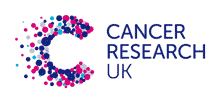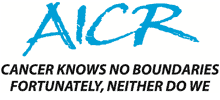

A new study at Imperial has shed light on how cells degrade their components to use as an energy source when they are starved or under stress.
This process, known as autophagy, is important in all cells as a way to break down unwanted parts, but its role in cancer is of particular interest to scientists. Autophagy is thought to enable cancer cells to survive chemotherapy or radiotherapy. Researchers think stopping tumour cells from doing this would improve the effectiveness of treatments and the survival of cancer patients. In addition, problems with autophagy are thought to contribute to neurodegenerative diseases such as Alzheimer’s, by allowing faulty proteins to build up inside neurons.
This opens the door to developing novel drugs that target Armus and help conventional therapies kill cancer cells more efficiently.
– Dr Vania Braga
NHLI
In a new study published in Developmental Cell, Dr Vania Braga and her group in the National Heart and Lung Institute at Imperial have discovered that a protein called Armus plays an important role in regulating autophagy. Unwanted material inside cells is collected into packages, which then fuse with stores of enzymes that digest the material. The study found that Armus facilitate the fusion of these two compartments in the cell. Blocking Armus stops cell components from being cleared out, causing them to accumulate in the cell.
“Inhibiting autophagy has been shown to improve the effectiveness of chemotherapy for lung and pancreatic tumours, but at the moment there are no specific drugs that can do this in patients”, Dr Braga said. “We found that if you stop Armus from working, the components don’t get broken down. Cells thus cannot obtain extra energy from recycling parts that helps their survival. This opens the door to developing novel drugs that target Armus and help conventional therapies kill cancer cells more efficiently.”
The picture above shows packages of cellular material to be broken down, coloured in green, and Armus coloured in red. Where both appear in the same place, the colour appears yellow.
The research was funded by Cancer Research UK, the Association for International Cancer Research, the Wellcome Trust, the Brunei Government and the Biotechnology and Biological Sciences Research Council.
Reference
Carroll, B.; Mohd-Naim, N.; Maximiano, F.; Frasa, A. M.; McCormack, J.; Perdios. L.; Finelli, M.; Thoresen, S.B.; Daigaku, R.; Francis, R.E.; Futter, C.; Dikic, I. & Braga, V.M.M. The TBC/RabGAP Armus coordinates Rac1 and Rab7 functions during autophagy. Dev. Cell. 25:15-28, 2013. 10.1016/j.devcel.2013.03.005
Supporters




Article text (excluding photos or graphics) available under an Attribution-NonCommercial-ShareAlike Creative Commons license.
Photos and graphics subject to third party copyright used with permission or © Imperial College London.
Reporter
Sam Wong
School of Professional Development

Contact details
Email: press.office@imperial.ac.uk
Show all stories by this author




Leave a comment
Your comment may be published, displaying your name as you provide it, unless you request otherwise. Your contact details will never be published.